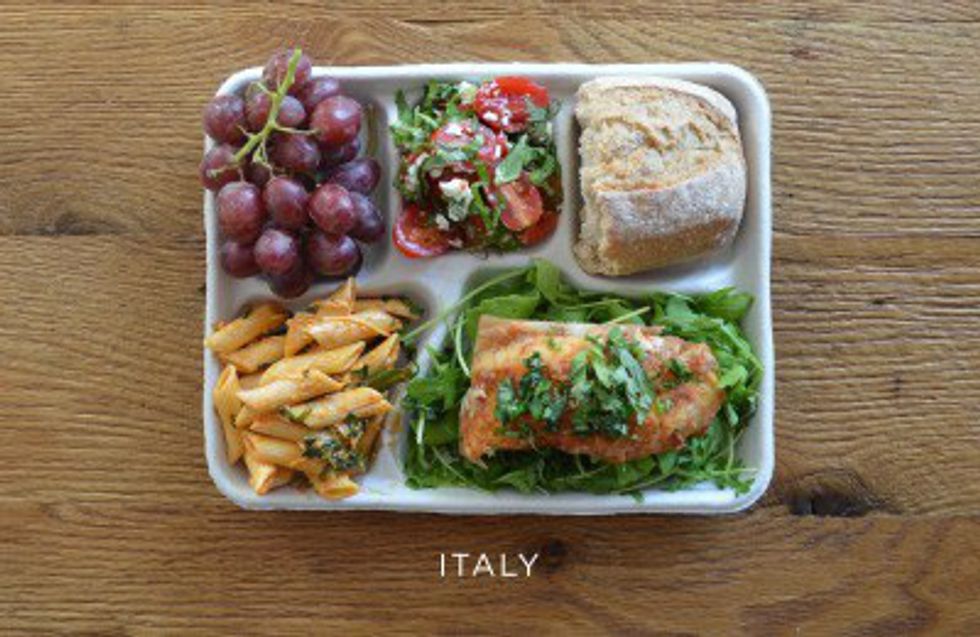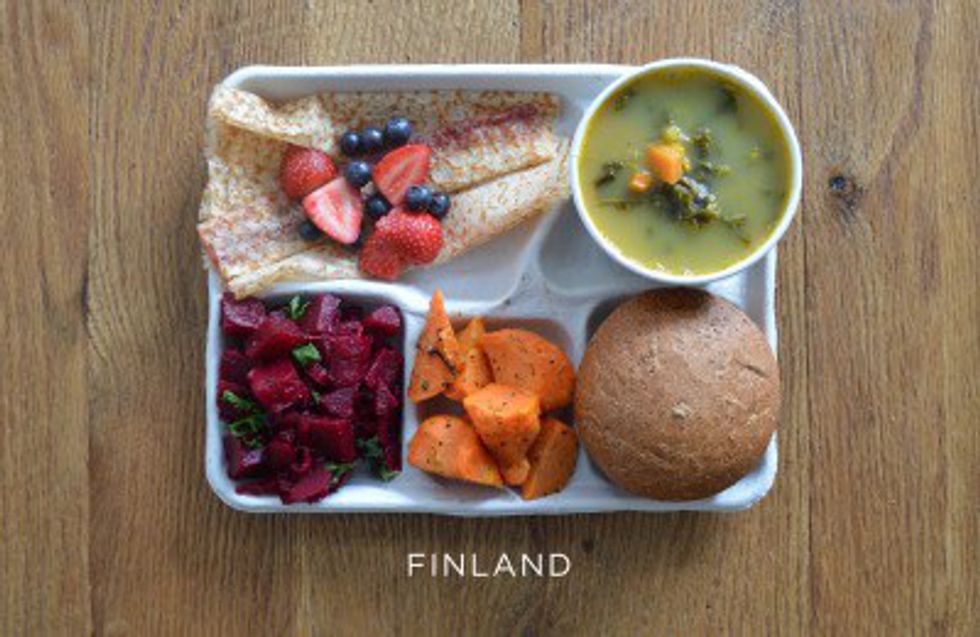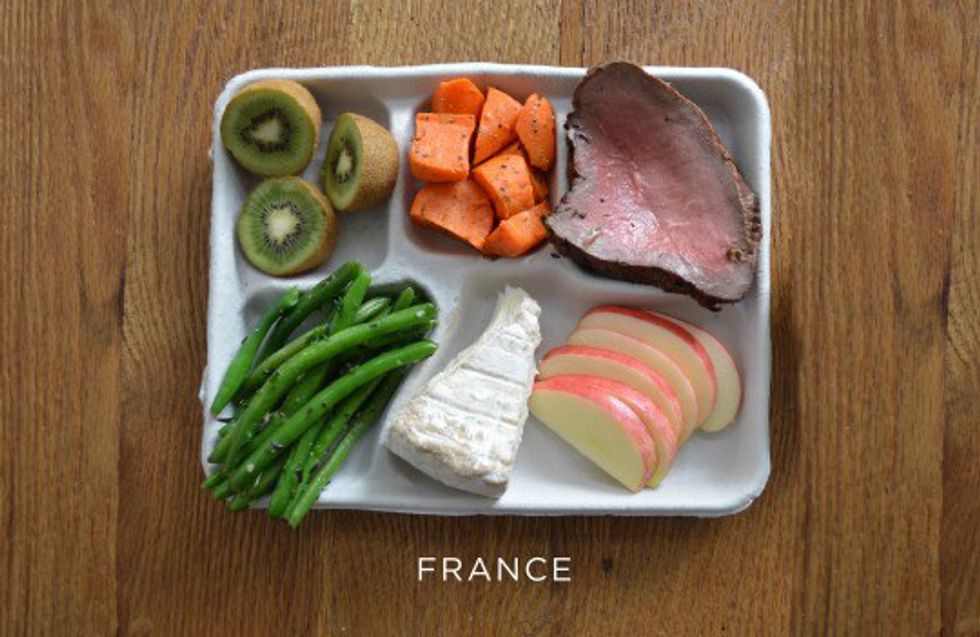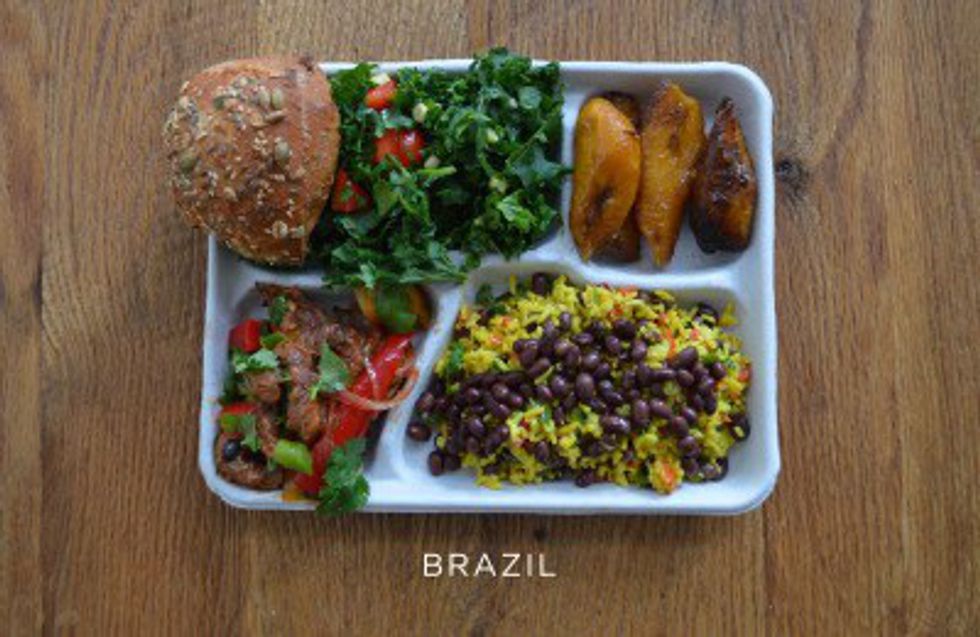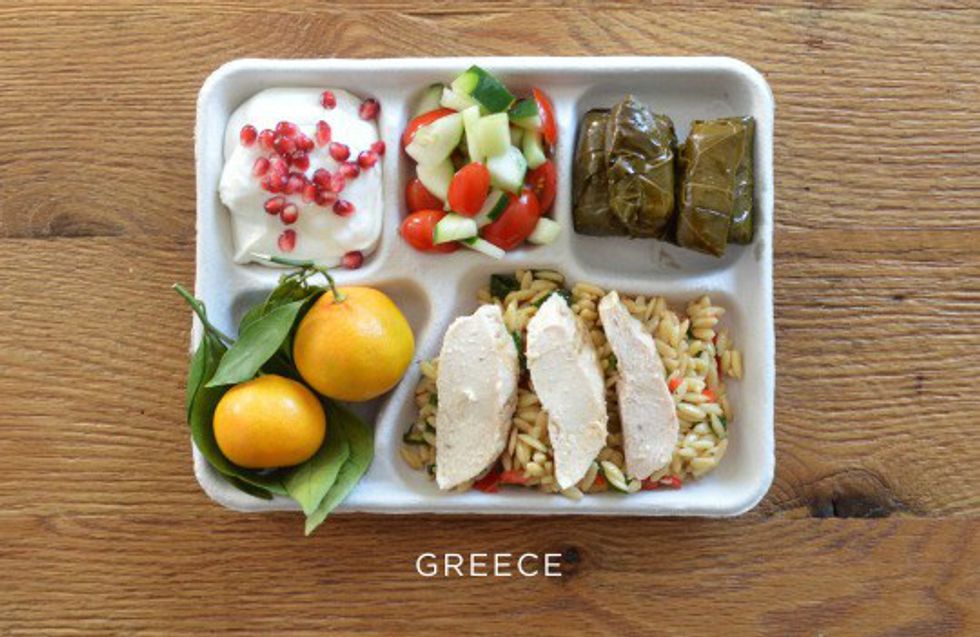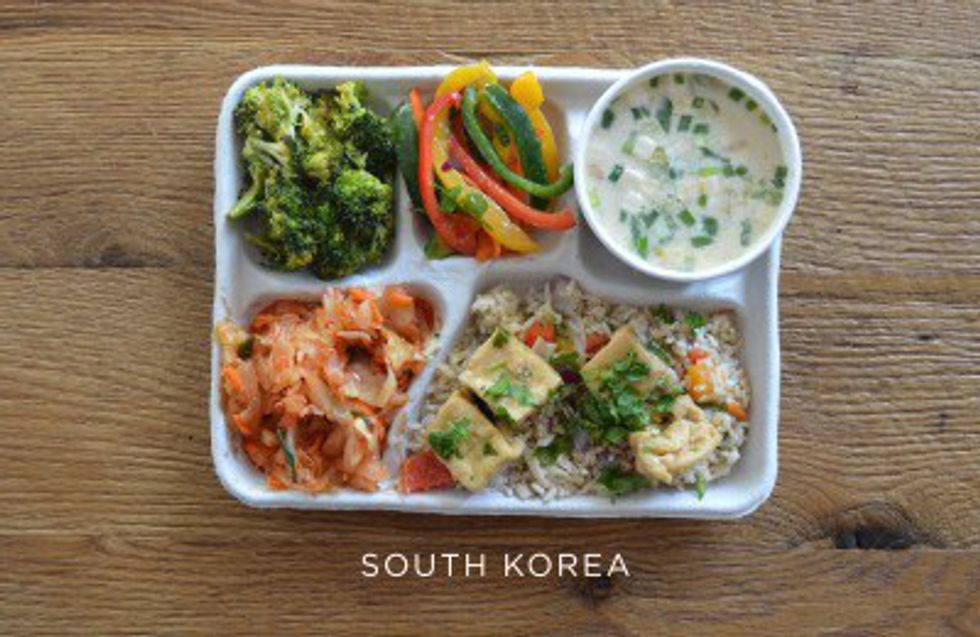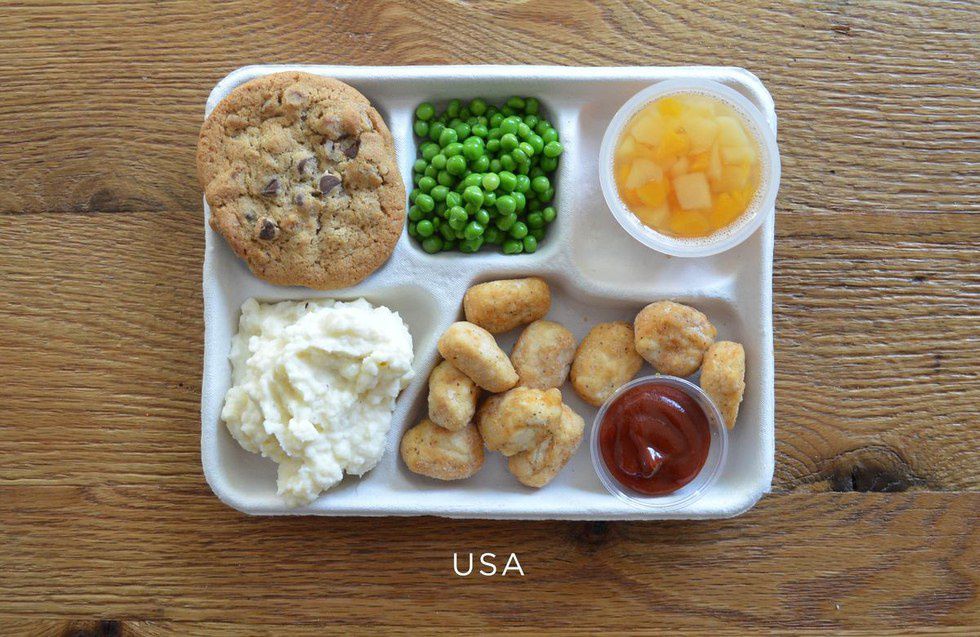American school lunch has never been the subject of foodie dreams. In fact with its all-too-common questionable gray meats, rubbery fried "nuggets" and multi-colored mush, many might consider American school lunches to be closer to a nightmare.
Growing students need nutritious food and a healthy lifestyle more than ever; spending seven or more hours in an educational environment, focusing on difficult information and facing high-stress situations involving assessments is a daunting task, and being forced to do it on an empty stomach (or a stomach filled a school-served culinary abomination, for that matter) adds significantly to the burden that students face. While nutritional needs vary among individuals, teenagers require an average of 2,400 calories per day in order to meet their energy and sustenance needs. According to ChooseMyPlate, a well-balanced diet of 2,400 calories should consist of at least two cups of fruits and vegetables, more than six ounces of grains and protein and three cups of dairy. Just as a car cannot function without fuel, a student cannot properly learn without a nutritious diet. Unfortunately, American school lunches, although reformed, are still leaving much to be desired.
Typical school cafeteria menus across the country provide evidence of a high-sodium, low-fiber staple diet consisting of fatty items such as pizza, french fries, hot dogs, burgers and the occasional mystery meat; even beef with fake grill marks and a side of sweetened fruit cups is not a far stretch from a student's midday meal. While many detractors claim that the quality of most American lunches has improved over the past 15 years, everyone from nutritionists and public-health experts to the First Lady -- not to mention a growing number of frustrated and starving students -- believe that American school lunches are over-processed affairs laden with unhealthy preservatives, sugar, trans fat and sodium. Nutritional quality varies greatly among districts, but according to the United States Department of Agriculture, a typical school lunch far exceeds the recommended 500 milligrams of sodium; some districts, in fact, serve lunches with more than 1,000 milligrams. The USDA also reported that one-third of schools stay below the recommended standard for fat content in their meals.
The pitiful quality of American school lunches has proven especially abysmal for the 32 million children relying on the National School Lunch Program, which provides low-cost or free lunches to students from families with incomes at less than 130 percent of the poverty level. For these students, school is the institution where they receive the majority of their weekly nutrition; they do not have the ability to brown-bag their own lunch when school meals look meager, and they do not have access to healthy food elsewhere. According to Ross Fraser, director of media relations at Feeding America, "the lack of adequate nutrition can literally change the architecture of a child's brain."
Although the United States has attempted to follow other countries' leads to reform school lunches, American cost-cutting measures and shortcuts seem to get in the way. Even following school lunch reforms, students continued to complain that their school lunches were inadequate; as it turns out, rather than increasing spending on lunch to purchase higher-quality fruits and vegetables, schools began cutting-down the sizes of their portions to prevent carbohydrate and sodium consumption while saving money at the same time. While countries such as France face restrictions on how much ketchup can be served weekly, the U.S government has at various times tried to pass ketchup off as a vegetable to inexpensively meet its own subsequent nutritional requirements.
That's not to say the country is apathetic: particular U.S government sectors are making strides to improve the condition of the food being served to the country's youth. For example, by 2013, all 1,300 of New York City’s public elementary schools were equipped with a fresh salad bar in their cafeterias. Recent photos courtesy of SweetGreen's Tumblr, however, embody the idea that despite recent progress, other countries clearly have the United States beat when it comes to school lunches. There's less brown mush, more brain-food. The photos prove that it is possible for students to thrive on school lunches that are both delicious and nutrient-rich, that there is a world of lunch-possibilities for a country that is willing to spend more than an average of one dollar and 19 cents on each meal for a student. Investing in the health of a country's children makes for a healthier future.
Which lunch do you want to be eating?
Fried “popcorn” chicken, mashed potatoes, peas, fruit cup and a chocolate chip cookie.
